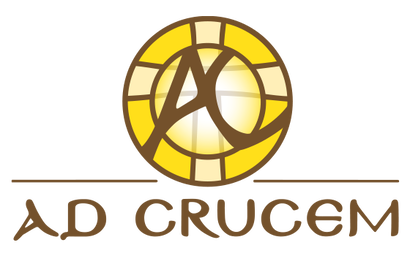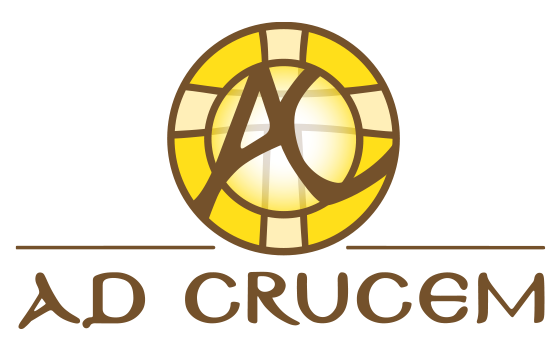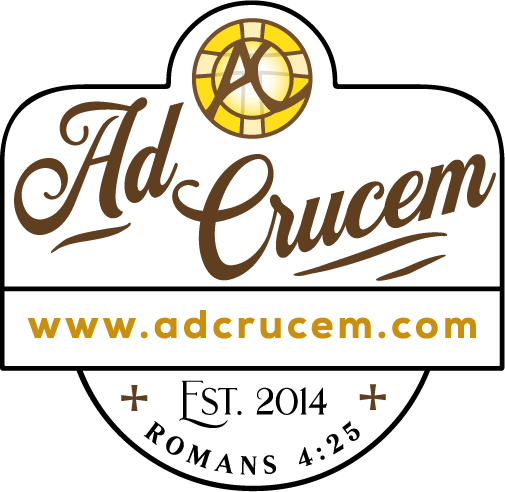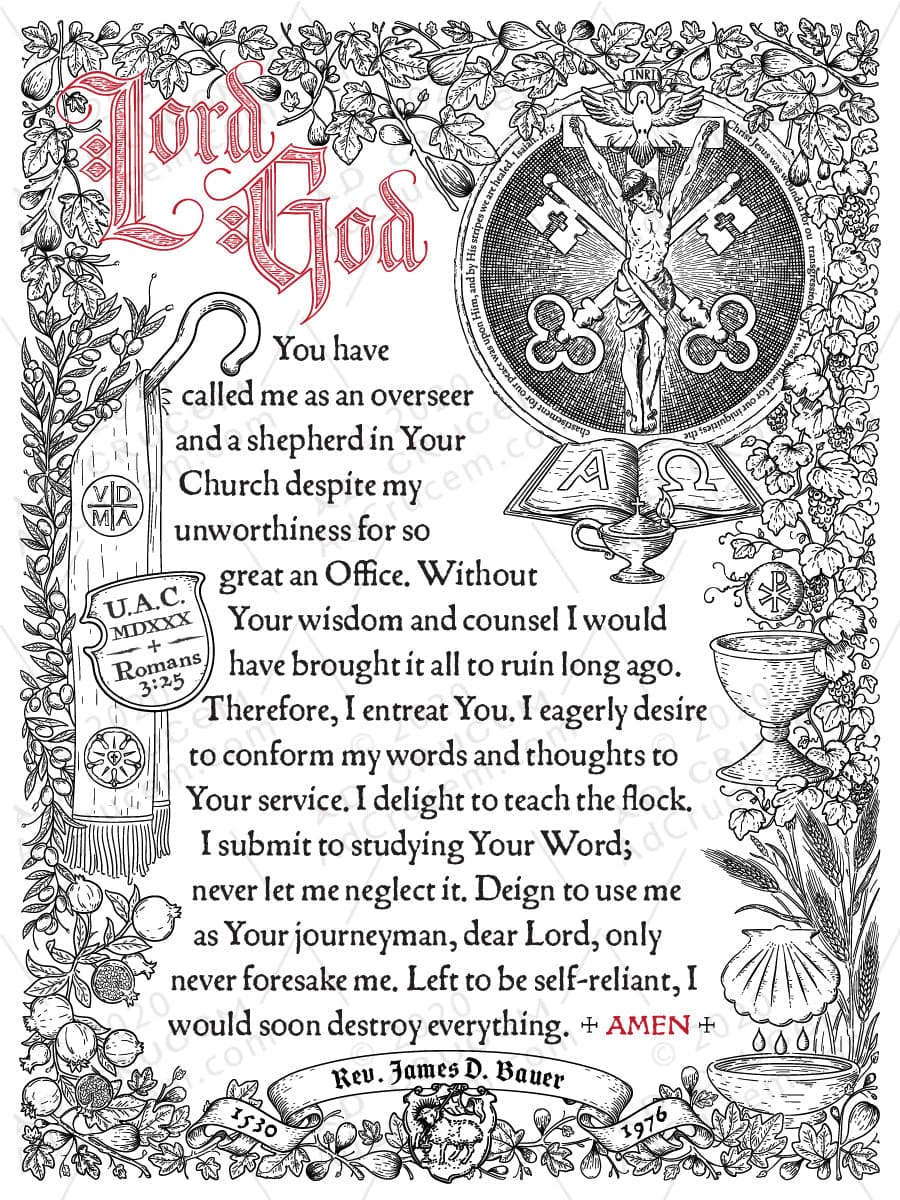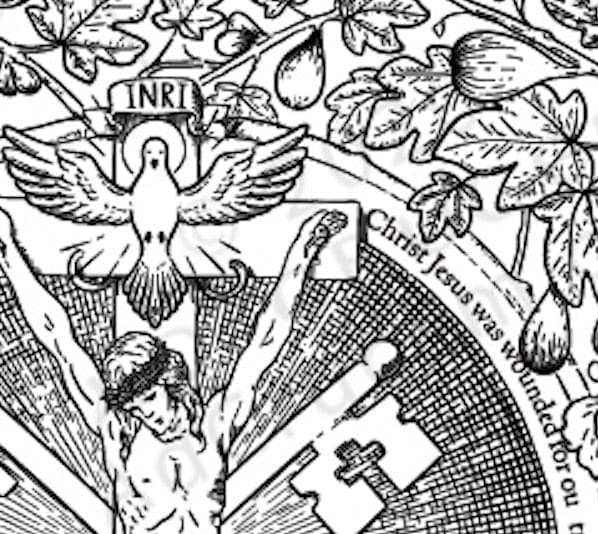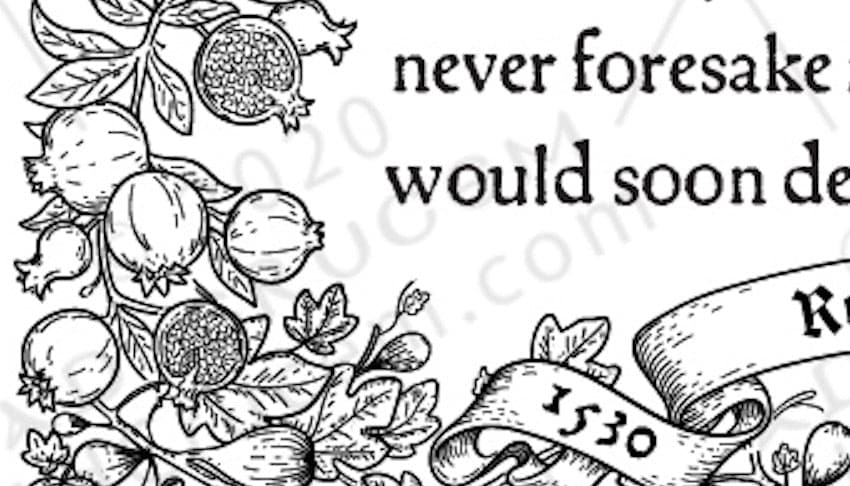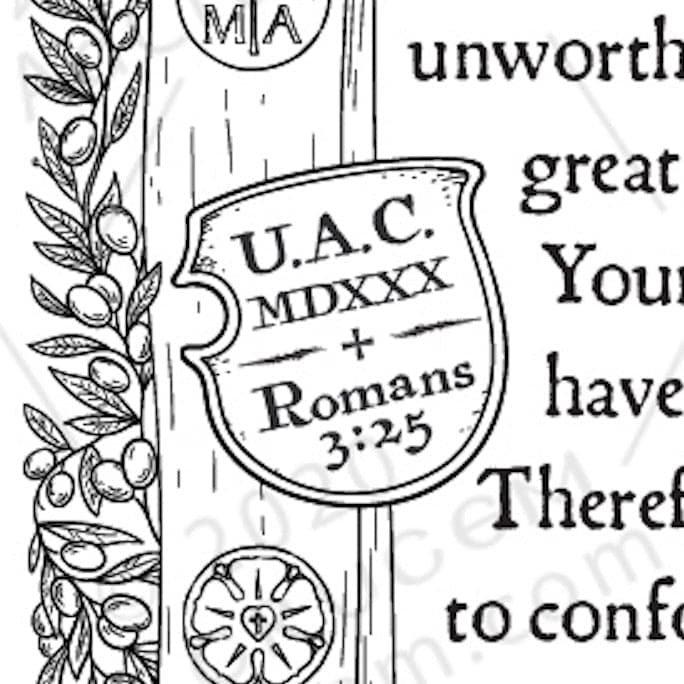Ad Crucem Sacristy Prayer Poster
$ 45.00
This finely illustrated version of Martin Luther's Sacristy Prayer has been on our hearts and in our minds for a number of years. It incorporates many symbols of the Christian faith to celebrate and communicate the Office of Holy Ministry.
PERSONALIZATION
This poster can either be purchased personalized ($50) OR without personalization ($40). To personalize, provide us with the following information in the notes at checkout:-
- Name of the Pastor
- Date of Ordination or Installation
- A Chosen Scripture verse
DIMENSIONS
18" x 24". Frames for this size are readily available at stores like Michael's or through Amazon.com.
TRANSLATION
AdCrucem.com translated Martin Luther's original prayer into modern, easily readable, and understood English. This is the "short" version cited in Luther's Works (LW 5:123).
SYMBOLS & IMAGERY
Luther Rose – Martin Luther’s symbolic seal. This is how he described it:-
The first should be a black cross in a heart, which retains its natural color so that I myself would be reminded that faith in the Crucified saves us. "For one who believes from the heart will be justified" (Romans 10:10). Although it is indeed a black cross, which mortifies and which should also cause pain, it leaves the heart in its natural color. It does not corrupt nature, that is, it does not kill but keeps alive. "The just shall live by faith" (Romans 1:17) but by faith in the crucified. Such a heart should stand in the middle of a white rose, to show that faith gives joy, comfort, and peace. In other words, it places the believer into a white, joyous rose, for this faith does not give peace and joy like the world gives (John 14:27). That is why the rose should be white and not red, for white is the color of the spirits and the angels (cf. Matthew 28:3; John 20:12). Such a rose should stand in a sky-blue field, symbolizing that such joy in spirit and faith is a beginning of the heavenly future joy, which begins already, but is grasped in hope, not yet revealed. And around this field is a golden ring, symbolizing that such blessedness in Heaven lasts forever and has no end. Such blessedness is exquisite, beyond all joy and goods, just as gold is the most valuable, most precious, and best metal.”
Holy Spirit Dove – From Matthew 3:16, “As soon as Jesus was baptized, he went up out of the water. At that moment heaven was opened, and he saw the Spirit of God descending like a dove and alighting on him. And a voice from heaven said, “This is my Son, whom I love; with him, I am well pleased.” (ESV)
Crucifix – representative of Christ on the Cross, crucified for sinners. Romans 4:24-25.
Office of the Keys - The Office of the Keys is spiritual (Mt. 20:25–26; Jn 18:36; 2 Co 10:4; Eph 6:10–17); it includes all spiritual rights, duties, and privileges necessary for the welfare of the church on earth, e.g. the conveying of grace to mankind through preaching, administering Baptism and Lord's Supper, and through mutual conversation and consolation. In particular, the Office of the Keys gives the power to forgive and retain sins (loosing and binding), ie., not merely to announce and to declare to men the remission or retention of sins, but actually to give forgiveness to penitent sinners and to deny forgiveness to impenitent sinners (Jn 20:23; 2 Co 2:10). (Source cyclopedia.lcms.org)
Alpha and Omega - A Title of Christ from Revelations 21:6, “I am the Alpha and Omega, the Beginning and the End.”
Open Bible and Oil Lamp - Thy Word is a Lamp unto my feet and a light unto my path. (Ps 119:105). Oil lamps are symbolic of knowledge and wisdom and the Word of God.
Shell with water droplets - Symbolizing the sacrament of Baptism and the Holy Trinity.
Chalice - The Holy Chalice is the vessel that Jesus used at the Last Supper to serve the wine. Confessional churches continue the tradition of using a chalice for Holy Communion.
ChiRho - The Chi Rho is one of the earliest forms of Christogram, formed by superimposing the first two letters—chi and rho —of the Greek word ΧΡΙΣΤΟΣ in such a way that the vertical stroke of the rho intersects the center of the chi.
Figs - Symbolic of the Tree of Knowledge of Good and Evil. Figs were also a sign of peace and prosperity for ancient Israel ( 1 Kings 4:25; Micah 4:4; Zechariah 3:10 ). They were also valued for their medicinal properties ( 2 Kings 20:7 ).
Olives - Symbolic of illumination, food, and healing. It was an abundant and critical commodity in Judea.
Grapes - Symbolizing the Blood of Christ.
Pomegranates - Symbolic of righteousness. When Israel sent spies to the Promised Land, they returned with figs and pomegranates, along with grapes, from the Vale of Eshcol (Numbers 13:23). Vines, figs, and pomegranates are mentioned (Numbers 20:5) as fruits the Israelites missed in the wilderness; the promised land was to be one "of wheat and barley, and vines and fig-trees and pomegranates" (Deuteronomy 8:8), a promise renewed in Haggai 2:19. (Source: BibleStudyTools.com).
Wheat - Symbolic of the Body of Christ. The "wheat harvest" was one of the regular divisions of the year for the people of Israel (Exodus 34:22; Judges 15:1; 1 Samuel 12:17).
Shepherd’s Staff - Symbolizing the role of the pastor as under-shepherd, who is commanded to care for his flock. The shepherd uses his stave to bring wayward sheep back to the fold and to strike wolves who would devour their souls.
Stole – A vestment of the pastor that signals that he holds a rank in the Office of Holy Ministry, established by Christ Jesus himself. It shows the people that he is a rightly sent, called, and ordained Minister of Word and Sacrament.
U.A.C. - The Unaltered Augsburg Confession. Orthodox Lutherans refer to the UAC specifically because in 1540, Philipp Melanchthon produced a revised edition, the Variata, which the Reformed theologian John Calvin endorsed.
MDXXX (1530) – The year the Lutheran Confessions were codified. The Augsburg Confession is the primary confession of faith of the Lutheran Church and one of the most important documents of the Protestant Reformation. The Augsburg Confession was written in both German and Latin and was presented by a number of German rulers and free-cities at the Diet of Augsburg on 25 June 1530.
Shipping to the continental USA is always free at Ad Crucem. In most cases, shipping is first class USPS mail. Our banners are shipped via UPS. A number of our items are created and shipped directly from the artist to save on costs for the consumer. Once the item has shipped, we will email the tracking details to you.
Our policy lasts 30 days. If 30 days have gone by since your purchase, unfortunately we can’t offer you a refund or exchange.
To be eligible for a return, your item must be unused and in the same condition that you received it. It must also be in the original packaging.
To complete your return, we require a receipt or proof of purchase.
There are certain situations where only partial refunds are granted: (if applicable)
- Any item not in its original condition, is damaged or missing parts for reasons not due to our error.
- Any item that is returned more than 30 days after delivery
Refunds (if applicable)
Once your return is received and inspected, we will send you an email to notify you that we have received your returned item. We will also notify you of the approval or rejection of your refund.
If you are approved, then your refund will be processed, and a credit will automatically be applied to your credit card or original method of payment, within 5 days.
Late or missing refunds (if applicable)
If you haven’t received a refund yet, first check your bank account again.
Then contact your credit card company, it may take some time before your refund is officially posted.
Next contact your bank. There is often some processing time before a refund is posted.
If you’ve done all of this and you still have not received your refund yet, please contact us at wanita@adcrucem.com.
Sale items (if applicable)
Only regular priced items may be refunded, unfortunately sale items cannot be refunded.
Exchanges (if applicable)
We only replace items if they are defective or damaged. If you need to exchange it for the same item, send us an email at wanita@adcrucem.com and send your item to: 8416 S. Parfet Ct. Littleton US 80217-4115.
Gifts
If the item was marked as a gift when purchased and shipped directly to you, you’ll receive a gift credit for the value of your return. Once the returned item is received, a gift certificate will be mailed to you.
BANNER RETURN POLICY - PLEASE NOTE
Banners returned for manufacturer defects and to be replaced or returned for any other reason, must be received by Ad Crucem within 30 days of shipping.
The banners are mailed directly from the printers, in order to reduce costs for our churches. This means that Ad Crucem is unable to check them ourselves before they are mailed to the recipients. So please be sure to check your banners carefully as soon as you receive them.
Banners returned in this period for other reasons (e.g. size or color preferences are different) are subject to a 35% restocking fee, 65% of the original purchase price will be refunded. Please double check your size and color requirements before ordering from us. We are happy to assist with custom requirements.
